- Connecting audio
- Audio PC
- Raspberry & Co
- All in Ones
- Bluetooth
- Chromecast
- Streaming audio player
- Music server
- USB Audio
- Real-time audio over IP
- FireWire DAC
- Multi-channel DAC
- NAS
- Remote control
- Vinyl rippers
- Acoustic materials
- Active crossover
- Active speakers
- Single driver speakers
- Invisible speakers
- Sound card
- Digital room correction
- Headphone
- Portable media players
Active crossover
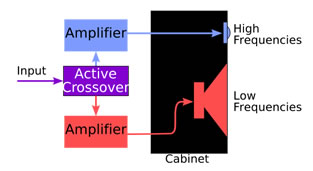 An active crossover gets its input from the pre-amp and sends the signal to multiple outputs, each connected to a power amp.
An active crossover gets its input from the pre-amp and sends the signal to multiple outputs, each connected to a power amp.
Each power amp drives only one driver.
As the passive crossover is removed out of the power circuit, the amp has now full control over the driver (damping).
The crossover is working on line level. This allows the use of active components (opamps).
This allows for more functionality than possible with passive components.
Crossovers are covered in more detail here.
Active crossovers can be implemented using an analog circuit or using DSP.
Analog
Bryston 10B $3050

The Model 10B features independently selectable crossover points for high-pass and low-pass, in case the speaker installation requires slightly overlapped, (or slightly staggered), response curves for the drivers. You can also independently select crossover slope, from 6, 12, or 18dB/Oct., where one driver requires faster cutoff than another in the same system. A fixed frequency plug in Linkwitz-Riley alignment with steep rolloff curves of 24 dB/Oct. is also available.
Marchand XM44 3 way $1200
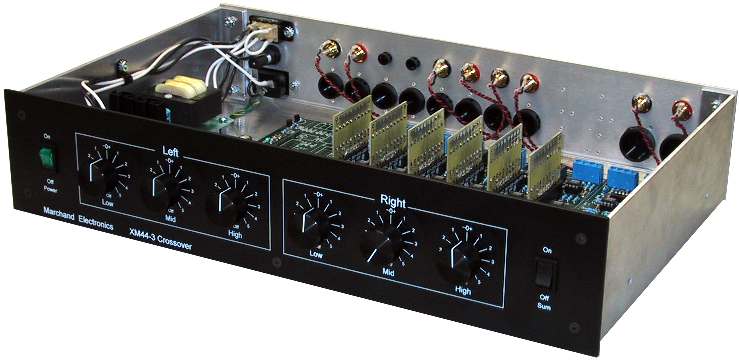
- Available 1-way, 2-way, 3-way or 4-way.
- Steep 24 dB/octave 4-th order slope (Linkwitz-Riley) standard. Up to 48 dB/octave optional.
- Any slope available (6,12,18,24,30,36,42 or 48 dB/oct)
- Asymmetric or symmetric slopes (different slopes can be mixed)
- Crossover frequency 20Hz - 20 KHz.
- Subwoofer summing switch.
- Standard 12 position attenuators, 1 dB/step, for level control on all outputs; 24 position attenuators optional.
- Options: Balanced outputs/inputs, baffle step compensation, notch/boost filters, delay sections and bass boost filter (Linkwitz transform).
Rane AC 22S Active Crossover $ 449
![]()
![]()
- Stereo 2-Way, or Mono 3-Way
- Linkwitz-Riley Alignment with 24 dB per Octave Slopes
- Adjustable Driver Alignment Delays
- Infrasonic, Ultrasonic and RFI Filters
- Low Output Muting (2-Way)
- Mono Sub Output Option
- Constant-Directivity Horn EQ Option
- Input & Output Level Controls
- Fully Active Balanced XLR Inputs & Outputs
- Internal Universal Power Supply (100-240 VAC)
DSP
DSP is using a processor to implement the crossover.
Instead of analog components, why not use a processor.
Playing Redbook audio (CD) is 44.100 sample a second.
Obvious the processor has 1/44100= 0.000023 of a second to do the processing.
In case of 192 kHz this is 0.000005 s.
Obvious a DSP chip must be fast.
The word length is also important to avoid audible artifacts due to quantization errors.
miniDSP Flex US$ 495

- Processor: 32-bit floating-point 400MHz Analog Devices SHARC DSP
- Multi-Core USB Audio processor (XMOS)
- Bluetooth streaming: LDAC™/aptX™ HD/aptX™/AAC/SBC
- Optional upgrade to Dirac Live® 3.x Digital Room Correction, Full Range Room Correction (20~20kHz)
- Audiophile performance: SNR@120dB(A), THD+N @ -110dB (0.0003%)
- Inputs: Stereo digital (USB Audio/SPDIF/Optical/Bluetooth), stereo analog (Unbalanced RCA)
- Flexible Output versions: Unbalanced (RCA), Balanced (TRS), Digital (TOSLINK & SPDIF)
- USB audio recording feature (4xCH processed output via USB audio to record inputs, e.g. Vinyl)
- White/Black OLED front panel controller with IR control
- Compatible with miniDSP's Device Console
Behringer DCX2496 $ 439.99

- 3 analog inputs (one suitable as digital stereo AES/EBU input) and 6 analog outputs for maximum flexibility
- High-end AKM® 24-bit/96 kHz A/D and D/A converters for ultimate signal integrity and wide dynamic range (113 dB)
- Integrated sample rate converter for easy connection of external digital signals with sampling rates from 32 to 96 kHz
- Precise dynamic EQs for level-dependent equalization and extremely musical parametric EQs, selectable for all inputs and outputs/
- Several types of EQs (LP/BP/HP) for each input and output/
- "Zero"-attack limiters on all output channels for optimal speaker protection/
- Four different mono and stereo output operating modes
- Individual crossover filter types (Butterworth, Bessel and Linkwitz-Riley) with selectable roll-off characteristics from 6 to 48 dB/octave
- Adjustable delays for all inputs and outputs-allow manual or automatic correction for room temperature, phase and arrival time differences
- Additional sum signal derived from the A/B/C inputs offers a fourth internal input signal
- Future-proof ULTRADRIVE PRO software enables single or multi remote control via PC through RS-232 and RS-485 interfaces
- Link option via RS-485 network interface enables cascading of several ULTRADRIVE PROs
- 60 user-defined internal presets storable via PC software or on PCMCIA card
- Open architecture assures easy software updates
- Servo-balanced, gold-plated XLR connectors for all inputs and outputs
- High-quality components and exceptionally rugged construction for long life and durability
- Internal switch-mode power supply for maximum flexibility (100 - 240 V~), noise-free audio, superior transient response plus lowest possible power consumption
DEQX HDP-3 Preamp proccesor AUD 6575

The HDP must be placed between the pre- and the power amp.
The signal from the pre-amp is converted to digital.
The DSP is applied and the result is converted by the DACs.
- Provides DEQX Calibrated™ speaker correction for passive speakers
- Provides DEQX-HD™ speaker correction for up to 3-way active speakers
- DEQX-HD™ active crossovers; 48dB/octave to 300dB/octave linear-phase
- Traditional active 3-way crossovers from 6dB/octave to 48dB/octave
- Frequency-response of speakers typically corrected from 6dB range to 1dB
- Automatically corrects phase and group- delay over typically 3ms window
- 32-bit, floating-point, 240-MFLOPS processing with dual SHARC DSPs
- Audiophile 24-bit 96kHz ADC-DSP-DAC processing and conversion
- Provides anechoic measurement and detailed display for speaker correction
- Provides room-measurement/display (non-anechoic) for room correction
- Calibration Kit provides DEQX-calibrated measurement microphone
- Two analog inputs: Unbalanced (2 x RCA) and Balanced (2 x XLR)
- Two stereo digital inputs: S/PDIF (1 x RCA) and AES/EBU (1 x XLR)
- Six analog outputs: unbalanced (6 x RCA)
Ground Sound DCN28 € 4.217,00
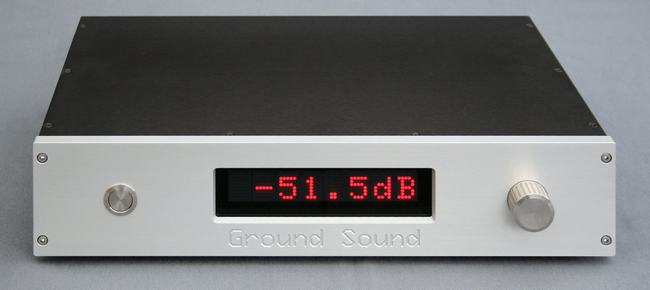
DCN28 is a digital crossover, pre-amplifier and room correction in one unit.
DCN28 is supplied with the XOverWizard II advanced software which is a graphical tool to manipulate with inputs, outputs, gain, crossover frequencies, crossover slopes, equalization and delay. The software features measurement engine, post processing tools, optimizer engine with target option, output listing and direct transfer to the crossover setup environment.
- 4 Digital Inputs (AES3-Coaxial-Optical)
- 2 Balanced Stereo analog Input
- 1 USB Audio Soundcard Input (galvanic isolated)
- Digital controlled analog attenuation on all outputs
- 4-way stereo true balanced outputs
- Digital PCM signal 32kHz-192kHz
- Included XOverWizard II advanced software
- Included Philips SRU6006 Remote
- Optinal application code for Philips Pronto remote
- Optinal code for Logitech Harmony Remote
- Big Dimmerble Dot Matrix display
- All in one Encoder Button controlling menu and values
- 4 Power Amplifier remote trig outputs for 12V relays
- Converter Resolution 24bit
- Sample rate 96kHz
- Total processing power: 180 biquads IIR
- Frequency response: 5-48kHz (-3dB)
- Latency input-output about 1ms
- Low Standby Power
- Dimensions: 430mm x 290mm x 100mm
Tact M/S 2150 XDM USD 4800.00

- 5 digital inputs and mic input
- Level balancing and time alignment
- Computerless digital crossover package
- Full blown 12 band parametric EQ
- 2-channel digital amplification width full spectrum Dynamic Room Correction
A true digital amplifier, accepting PCM input and using PWM (Pulse Width
Modulation) to amplify.
The M/S-2150 XDM crossover package is designed to support front panel crossover
design, thus totally eliminating the need for computer interface. All crossover
filter design algorithms are implemented in the M/S-2150 XDM internal processing
unit. Crossover filters are designed and loaded in a split of a second for
immediate listening and evaluation.
Supported crossover filters are Butterworth and Butterworth squared
All filter cutoff frequencies can be set anywhere between 10 and 24 KHz with
a resolution of 1 Hz and with filter slopes from 6 to 72 dB/octave.
As it is a 2 channel amp you can only use this with 2 way speakers.
You need 2 amps to drive a 2 channel 2 way speaker setup.
Amps can be synchronised.
Trinnov ST2 € 5890

• multi-point measurements of all loudspeakers
• time-frequency analysis: the loudspeaker and the room are separately equalized
• automatic optimization of amplitude and phase response according to target curves
• intelligent active crossovers: automatic alignment of delays and gains for every driver
Xilica XD 8080 $ 2000

Audio Performance
Freq Response: +/- 0.1dB (20 to 30kHz)
Dynamic Range: 115 dB typ (unweighted)
CMMR: >100dB (50 to 10kHz)
Crosstalk: < -100dB
Distortion: 0.002% (1kHz @ +4dBu)
Digital Audio Performance
Processor (DSP): 40-Bit Floating Point
Sampling Rate: 96kHz
Analog Converters: Super Performance 24-bit
Propogation Delay: 1.5ms
1.75 – 7.75ms with FIR
Audio Control Parameters
Gain: -40 to +15dB in 0.25 dB steps
Polarity: +/-
Delay: Up to 650 ms per I/O
Equalisation
Variable Equalizers: 8 per I/O
Type: Parametric, Hi-shelf, Lo-self,
Phase (1st and 2nd order)
Gain: -30 to +15dB in 0.25dB steps
Bandwith: 0.02 to 2.50 Oct (Q=0.5 to 72)
Graphic EQ: 1 per Input, 31 Band 1/3 Oct steps
Crossover
IIR Filter Type:
2 Individual filters per input & output.
Type - Butterworth, Linkwitz-Riley & Bessel.
FIR Filter Type:
2 Individual filters per Output.
Type - Multi-Tap.
Slopes: 6 to 48dB per Oct for IIR
50 to1200 Taps for FIR
PC
You can use software on a PC to implement an active crossover.
DIY
Ground Sound DCN23 € 693,00
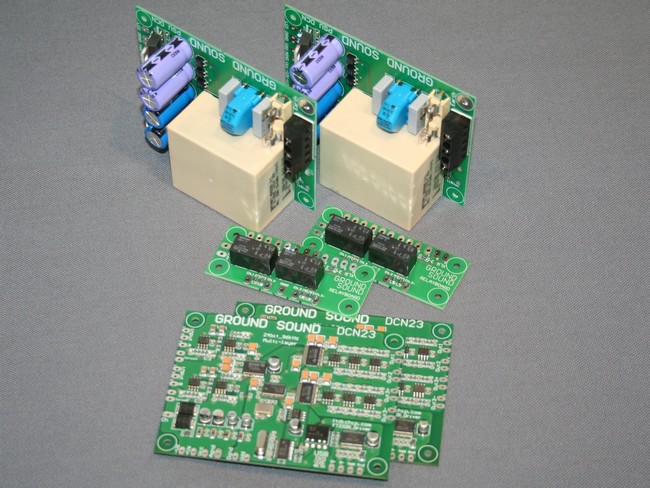
The DCN23 Kit is a stereo/dual mono 3-way stand alone digital crossover.
• High performance Burr-Brown converters
• 24bit resolution
• 96kHz sampling frequency
• XOverWizard software
• Optical isolated USB interface
• 48 biquads total processing filters
• 76bit processor precision
• 21mS total delay option
• Latency 1ms
• 4 layer high performance PCB
• Decoupling at all active components
Hypex PSC2.400 € 347,00 excl. VAT
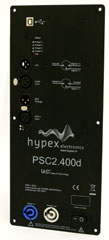
The module has two 400Watt UcD modules implemented and is also available with a digital audio input AES/EBU, called the PSC2.400d version. The supply voltage is provided by a Switched Mode Power Supply (SMPS400) module, also a module from Hypex Electronics.
A PC controls the PSC2 through the USB port. This connection is used to upload the configuration and filter settings. It will also be possible to update the firmware through USB.
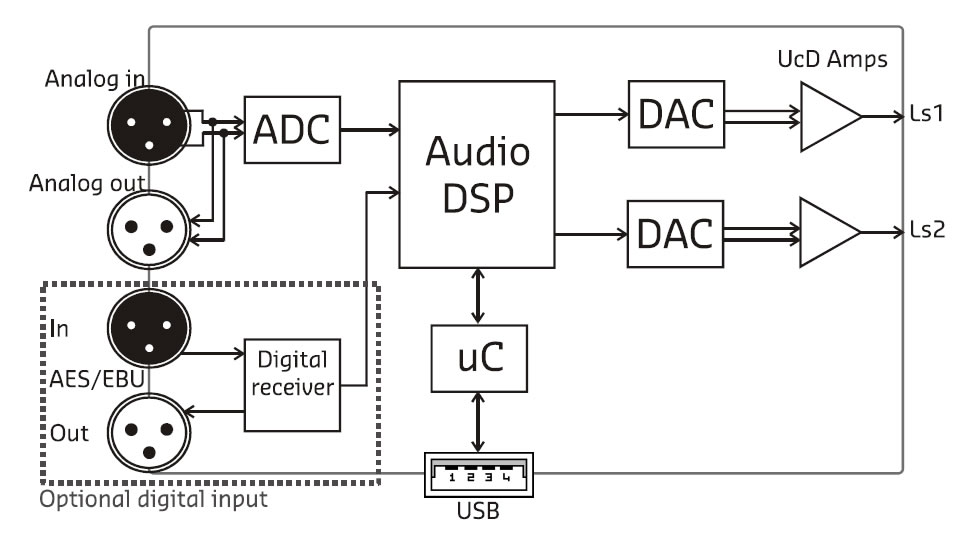
Hypex DLCP € 550,00 excl. VAT 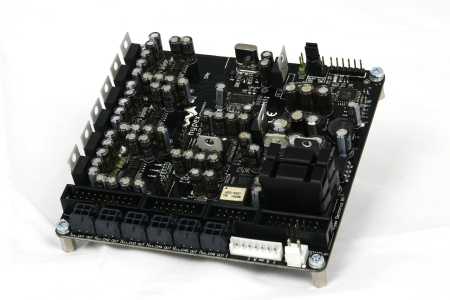
The “DLCP” is a complete hardware/firmware platform for digitally filtered (6 channels) and corrected active multiway loudspeakers. Digital response correction allows significant extra degrees of freedom in the acoustic design of a loudspeaker. Driver parameters can be selected for best efficiency and distortion instead of electrical damping, and the cabinet can now be fully optimized for radiation pattern.

